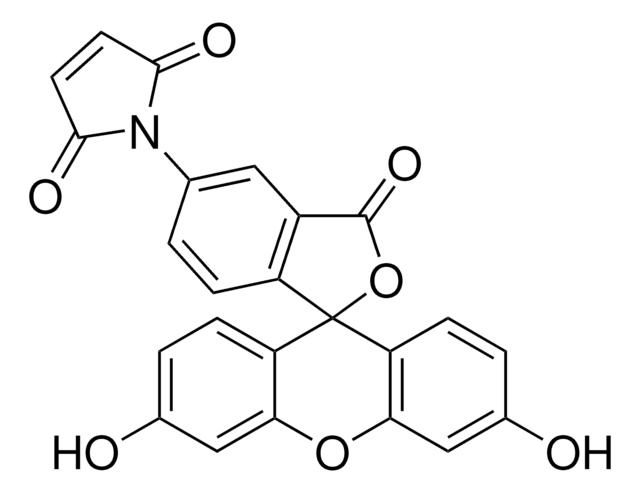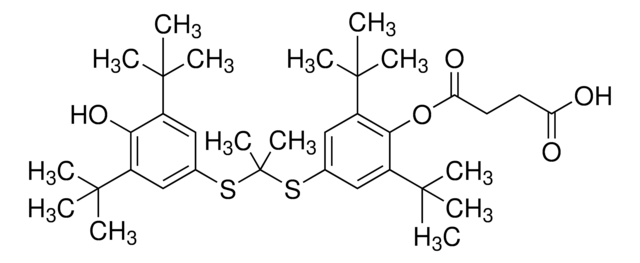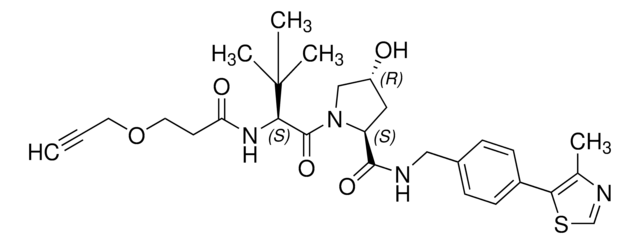929379
Opto-thalidomide-O-acetamide-C4-NH2 hydrochloride
Sinónimos:
4,5-Dimethoxy-2-nitrobenzyl 3-(4-(2-((4-aminobutyl)amino)-2-oxoethoxy)-1,3-dioxoisoindolin-2-yl)-2,6-dioxopiperidine-1-carboxylate hydrochloride
About This Item
Productos recomendados
ligand
thalidomide
Quality Level
form
powder
functional group
amine
storage temp.
2-8°C
SMILES string
COC1=CC(COC(N2C(CCC(N3C(C4=CC=CC(OCC(NCCCCN)=O)=C4C3=O)=O)C2=O)=O)=O)=C(C=C1OC)[N+]([O-])=O.Cl
InChI
1S/C29H31N5O12.ClH/c1-43-21-12-16(19(34(41)42)13-22(21)44-2)14-46-29(40)33-24(36)9-8-18(27(33)38)32-26(37)17-6-5-7-20(25(17)28(32)39)45-15-23(35)31-11-4-3-10-30;/h5-7,12-13,18H,3-4,8-11,14-15,30H2,1-2H3,(H,31,35);1H
InChI key
SEKXAIYNMUPUDC-UHFFFAOYSA-N
Categorías relacionadas
Application
Technology Spotlight: Degrader Building Blocks for Targeted Protein Degradation
Protein Degrader Building Blocks
Other Notes
Legal Information
signalword
Warning
hcodes
Hazard Classifications
Acute Tox. 4 Oral - Repr. 2
Storage Class
11 - Combustible Solids
wgk_germany
WGK 3
flash_point_f
Not applicable
flash_point_c
Not applicable
Elija entre una de las versiones más recientes:
Certificados de análisis (COA)
It looks like we've run into a problem, but you can still download Certificates of Analysis from our Documentos section.
Si necesita más asistencia, póngase en contacto con Atención al cliente
¿Ya tiene este producto?
Encuentre la documentación para los productos que ha comprado recientemente en la Biblioteca de documentos.
Global Trade Item Number
| Número de referencia del producto (SKU) | GTIN |
|---|---|
| 929379-50MG | 4065268454145 |
Nuestro equipo de científicos tiene experiencia en todas las áreas de investigación: Ciencias de la vida, Ciencia de los materiales, Síntesis química, Cromatografía, Analítica y muchas otras.
Póngase en contacto con el Servicio técnico
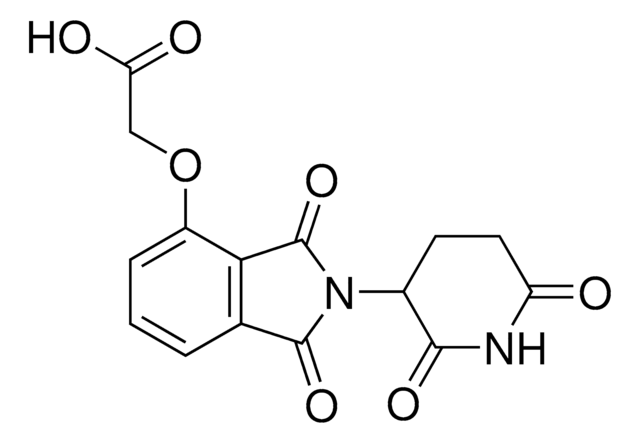
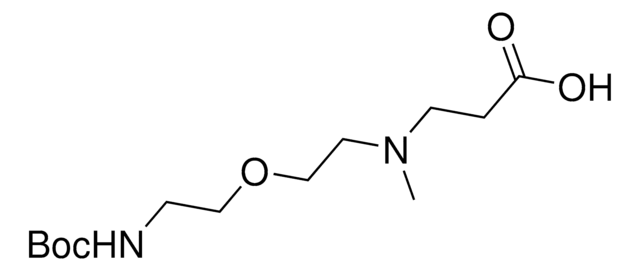
![3-[1,3-Dihydro-4-(5-hydroxy-1-pentyn-1-yl)-1-oxo-2H-isoindol-2-yl]-2,6-piperidinedione ≥95.0%](/deepweb/assets/sigmaaldrich/product/structures/165/184/ebc29f1b-f63f-4e48-afb5-b3aa4c69795a/640/ebc29f1b-f63f-4e48-afb5-b3aa4c69795a.png)

